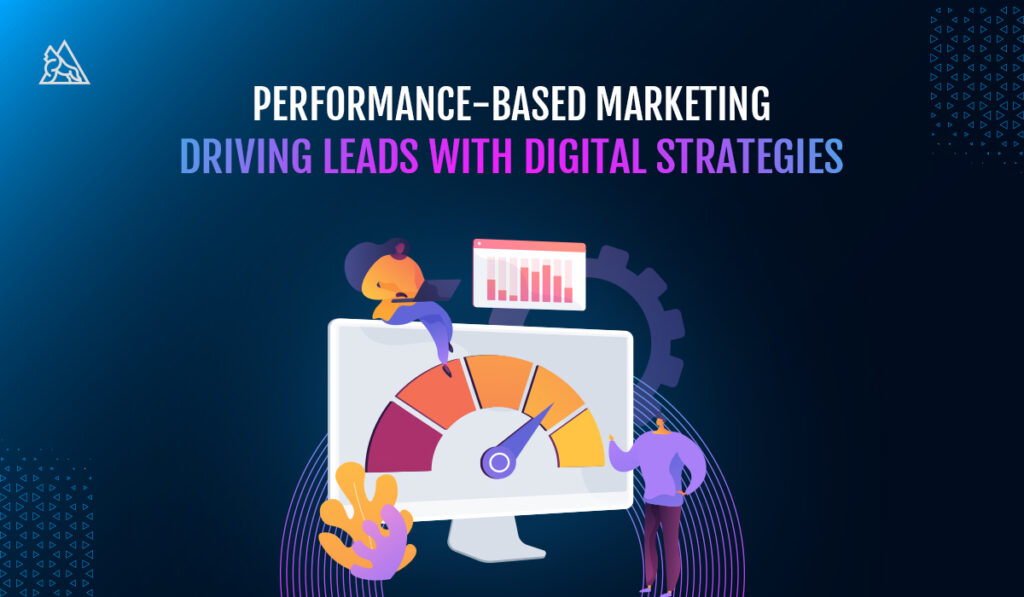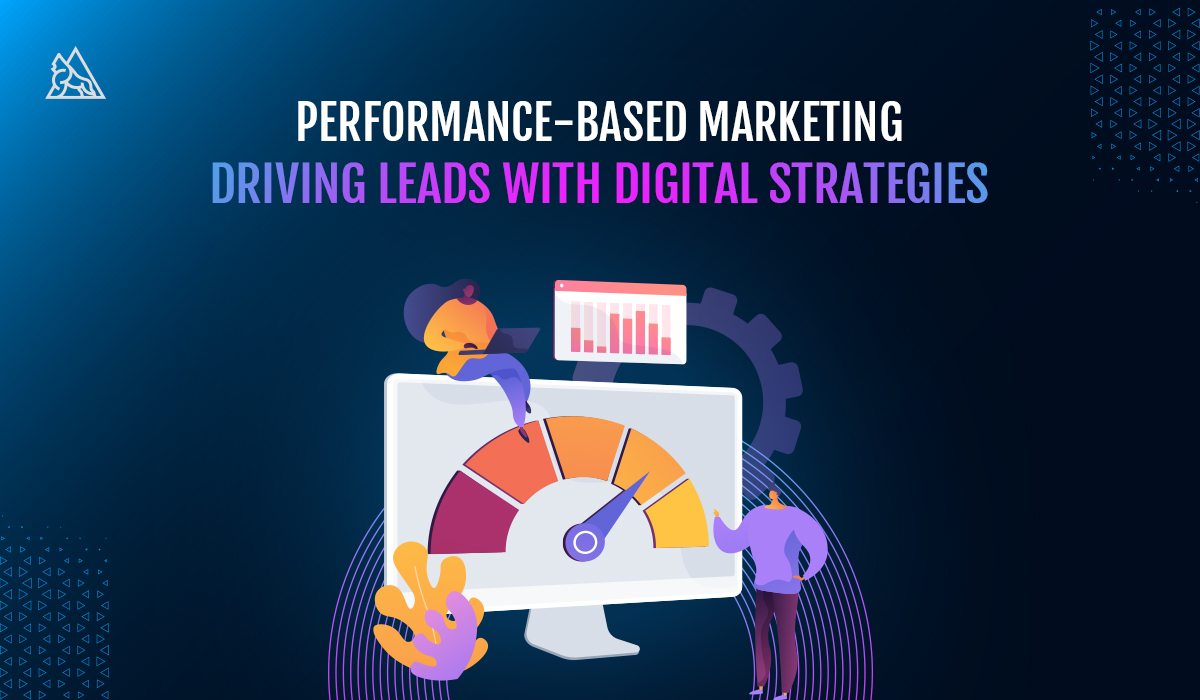Every business is looking for ways to generate leads, but with limited budgets, it can be tough to choose the best strategy. That’s where performance-based marketing comes in.
In simple terms, performance-based marketing means paying only when a specific action is completed. Whether it’s a lead, sale, or sign-up, you only pay for the results. This makes it one of the most effective digital strategies for businesses aiming to boost their sales while managing their budget effectively.
In this article we will dive deeper on performance based marketing to grow your business. So let’s get started.
What is Performance-Based Marketing?
Performance-based marketing is an online marketing model where businesses pay for specific actions, such as clicks, leads, or sales, rather than paying for ad impressions or the cost of running ads. It’s about measuring performance and ensuring that your marketing dollars are spent wisely. If you don’t get results, you don’t pay.
This marketing approach aligns your goals with your budget, which makes it ideal for businesses of all sizes. With measurable outcomes, you can track exactly what’s working and where improvements are needed.
Top Strategies for Performance-Based Marketing
Now that you know the basics of performance-based marketing, let’s look at some strategies that are proven to drive results.
- Affiliate Marketing
Affiliate marketing is a great example of performance-based marketing. You partner with individuals or companies (affiliates) who promote your products in exchange for a commission on sales or leads generated.
Affiliate marketing can help you reach a wider audience without having to pay upfront for advertising. You only pay when the affiliate generates a sale or lead. This makes it a low-risk, high-reward strategy for many businesses.
- Pay-Per-Click (PPC) Advertising
PPC advertising, especially with platforms like Google Ads and Bing Ads, is another form of performance-based marketing. You pay only when someone clicks on your ad. With PPC, you can target specific keywords, ensuring that your ads are shown to people who are already interested in what you offer. The key to success with PPC is continuous optimization to improve your cost-per-click (CPC) and conversion rates.
- Influencer Marketing
Working with influencers can drive results, especially when performance is tied to measurable actions like clicks, sign-ups, or sales. Influencers often have dedicated audiences, and their endorsement can lead to significant lead generation. It’s important to choose the right influencer whose audience aligns with your brand.
- Email Marketing
Email marketing is one of the most effective ways to generate leads. By creating engaging and targeted email campaigns, businesses can drive sales and conversions. Performance-based email campaigns can be structured around open rates, click-through rates, and conversions, ensuring that you only pay for results.
- Social Media Ads
Social media platforms like Facebook, Instagram, LinkedIn, and Twitter offer performance-based ad options. These platforms allow you to set specific goals like lead generation or conversions. You only pay when users take the desired action. Targeting the right audience with the right message can generate valuable leads for your business.
Why Should You Use Performance-Based Marketing?
There are a lot of reasons why performance-based marketing is becoming increasingly popular among businesses. Here are some key benefits:
Cost-Efficiency
Since you only pay for actual results, you can avoid wasting money on ads that don’t lead to any meaningful outcomes. This makes it an excellent choice for businesses with tight marketing budgets.
Better ROI
Performance-based marketing allows you to track your return on investment (ROI) more accurately. You can see exactly which campaigns or strategies are driving the most leads, and adjust your budget accordingly for better results.
Transparency and Accountability
With this model, you’re only paying for what works. This makes performance-based marketing more transparent and accountable. You have full control over how your marketing dollars are spent.
Scalability
As your business grows, so does the potential of performance-based marketing. The more leads and conversions you generate, the more you can reinvest into further growing your marketing efforts. It’s an incredibly scalable strategy.
Why Performance-Based Marketing Might Not Work for Everyone
While performance-based marketing has a lot of benefits, it’s not always the right approach for every business. Here are some potential drawbacks:
- Initial Setup Complexity Setting up performance-based marketing campaigns can require more effort upfront, especially if you’re new to digital marketing. You’ll need to have clear goals and performance metrics in place.
- Dependence on Data To succeed with performance-based marketing, you’ll need solid data to drive decisions. Without proper tracking and analytics, it can be hard to know whether your campaigns are performing well.
- Short-Term Focus Performance-based marketing tends to focus on immediate results. This can sometimes detract from long-term strategies, such as brand awareness and customer loyalty, which are also crucial for business success.
Top Tools for Performance-Based Marketing
If you’re planning to implement performance-based marketing, these tools can help you track and optimize your campaigns for better results:
Google Analytics
This is an essential tool for tracking website traffic, conversions, and customer behavior. With Google Analytics, you can monitor how well your performance-based marketing campaigns are performing.
HubSpot
HubSpot offers a variety of marketing tools to help with lead generation, email marketing, and performance tracking. It’s an all-in-one platform that’s great for businesses looking to optimize their marketing efforts.
SEMrush
SEMrush is a powerful tool for managing SEO, PPC, and competitor analysis. With it, you can track your performance-based campaigns and find opportunities for improvement.
Hootsuite
Hootsuite is a social media management tool that allows you to schedule posts, monitor engagement, and track performance. It’s particularly useful for businesses using social media ads for performance-based marketing.
How to Get Started with Performance-Based Marketing
If you’re ready to start driving leads with performance-based marketing, here’s a simple roadmap:
Set Clear Goals
Before you dive in, define exactly what you want to achieve. Are you looking for more leads, sales, or brand awareness? Your goals will determine which strategies and tools to use.
Choose the Right Channels
Depending on your target audience and goals, choose the marketing channels that are most likely to deliver results. This could be PPC, social media ads, email marketing, or affiliate marketing.
Create Compelling Campaigns
Craft marketing campaigns that resonate with your audience. Make sure your messaging is clear, concise, and tailored to the action you want them to take.
Measure and Optimize
Constantly track your results. Use data to tweak and optimize your campaigns to get better performance over time.
Final Thoughts
Performance-based marketing is one of the smartest ways to drive leads and maximize your marketing ROI. With a variety of digital strategies at your disposal, you can find the perfect approach that works for your business and budget.
At Gorilla 360 Marketing, we specialize in creating high-performing, lead-generating campaigns that deliver real results. If you’re ready to boost your lead generation efforts with performance-based marketing, get in touch with us today.
Let’s create a strategy that works for you.










